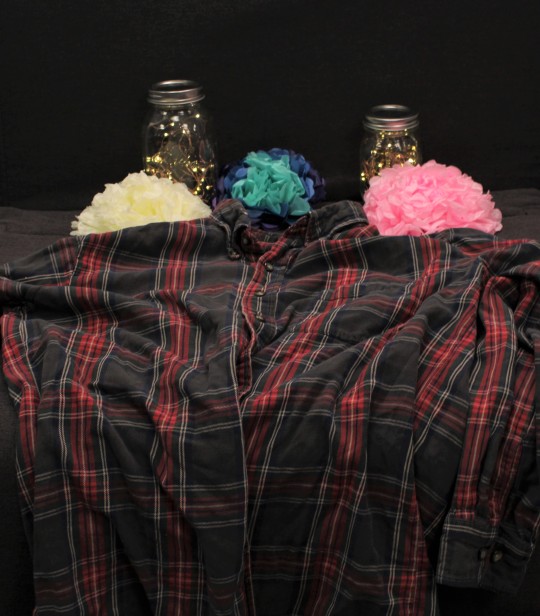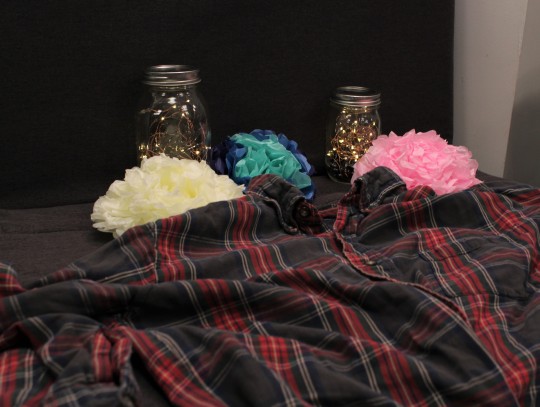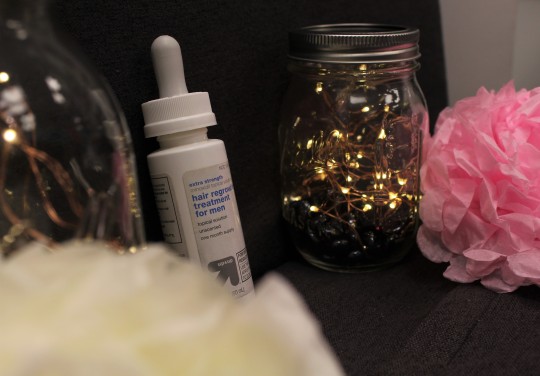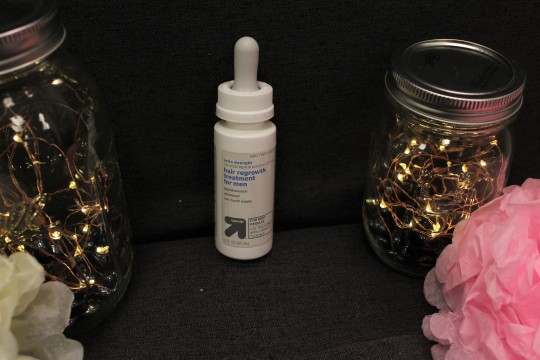This is a poem I wrote about my experience growing up nonbinary and having the ability to put it into words, along with my relationship with my father. The video is composed of a recording of my poem Daddy Issues put to a slideshow if pictures of me growing up to help show that while I may look like a little girl but, I was always nonbinary.
trans studies
Recommendations for Trans Attractions for Non Queer Partners
As the title says, this is an amateur’s guide for trans femmes/women (or anybody in that proximity, myself and trans femme) attracted cis-gendered men. No, I won’t be getting into queer identity terms. You can quickly google those. Although! I will provide a link to a glossary and suggest you look into the terms gynosexual, anrodesual, and skoliosexual. This isn’t to say they are the most “efficient” terms, but they are a good starting point to explore terms that fit the bill. I agree that labels can be exhausting, but sometimes finding a name for it feels good. It makes it tangible, possible, and accurate. And to expand on that feeling, I will be providing resources in the hopes that they will aid in your journey of exploring your sexual/romantic attraction/s! It might seem like So, with that being said…
Just take the pieces that feel good, and you can leave the rest behind. 🙂

This video gives a quick rundown of trans attraction, and is pretty accessible to those who learn the language of queer identity labels- we’ll call them.
The presenter is Dr. Wendy Ashley who has a Doctorate in Clinical Psychology. She has practiced therapy and counseling for over 25 years.
I figured this would be a great start to your journey.
Cute, you thought you were gonna get away with having to read. I know this book is ancient, but sometimes it’s helpful to just get down to the basics. The past usually tends to figure out the basics for us.
This book is essentially a curation of academic articles that highlight the prominent concerns and challenges with men’s sexuality. Writing is pretty accessible, FYI. And through my lived-in-experience, it seems to me that those concerns and challenges are exacerbated when the relationship is with a trans femme/women person
Concerns and challenges include, but are not limited to…
– Nonrelational sex
– The Centerfold Syndrome (one of my faves!)
– Appearance obsession
– Don Juanism (ooh, this one’s good too.)
– Sex as a commodity
– Sexual Harassment and rape
– Male gender socialization
– Perpetration of sexual abuse
– and more!
As suggested by the concepts and topics discussed in this book, I should give a…
TRIGGER WARNING!
Friendly reminders to be gentle with yourselves, lovies. ❤


And so now, I present…
Box No. 512 Podcast: Grown Black Women Talk hosted by Aeon and The Lioness.
They are both trans women and speak the truths they have acquired throughout their lived experiences.
to connect the dots between Men and Sex,
I RECOMMEND THE EPISODES:
– Trans Women as the Default
– Yes Cis, That Was Transphobic
The episode should be listened to in order, and I believe they are the second and third episodes.
I believe they’ve stopped doing it for a minute, but it’s a great podcast!
So! Trans Bodies, Trans Selves. This is basically the bible for trans people that pertains to anything and everything. An exagaration onviously, but it’s a good one!
Each chapter explores a diffeent issue within the limitless potentialities of what a trans* person’s life can look like. Issues and guidarnce all the way from medical transitions to relationships to race to etc!
It’ll be helpful to have something aroung when you discover a trans* something that you don’t know about. It gets really laborous if you turn to your tran* partner to educate about everything.
Look how cute the cover for the second edition is! I have the first edition, and this is like the first time I’m actully buying an additional edition of the same book.

So there you have it; these books helped me understand the perspectives and considerations of wanting to be in partnership with cis-meen, and that’s alright. There is definitely a shortage of perspectives Also, there are so many books about the trans experience out there. Give it a google, give it a browse. Good luck on your journey! TRANS* LOVE FOREVER.
Objects as Sites of Transition and Self-Expression
**Author’s Note: I am conducting these interviews and writing this post from the perspective of a white, nonbinary transmasculine, masc-leaning pansexual, queer college student who is majoring in Gender, Sexuality, and Queer Studies. I am not claiming that these experiences detailed below are indicative of the feelings of an entire group of individuals, nor am I claiming that my analysis represents anyone’s opinion but my own. I also recognize that there are many voices and experiences missing from these interviews that are essential to creating a larger picture of the trans experience. I was given explicit permission to share the information and personal stories that are detailed below.
Transitions are complex. Every person has their own experiences and individual hurdles that they’ve had to overcome while working towards the goal of becoming their full selves. I’ve been asked countless times to share my story of transition– the story of how I came to be who I am and how I continue to grow– but rarely have I felt truly seen by those listening. We spend a lot of time talking about the large and overarching ideas of what transition looks like, but rarely do I see emphasis on the specific and deeply individual stories of trans people. When I do, I often feel as if we are again being fed someone’s watered-down, generic, and often very westernized version of themselves.
I think that we often forget to look at the little details that make our transitions feel real to us. We forget that our stories are about more than just when we came out or when we started hormones or when we had surgery. Our stories are about humanity, attachment, and finding joy and comfort in the little things that help us understand ourselves, which is why I set out to hear and document the personal stories of trans individuals as they shared their intimate connections to the objects that they felt were a manifestation of their trans experience– objects that the general media would never care to ask about.
My theory behind this work is that people’s transitions can be found within some of the most mundane objects. Humans have always found connection and meaning within the inanimate. We collect things and pass down family heirlooms and reminisce over items that bring back memories. I think that we often overlook just how integrated the material world is to a person’s transition. I wanted to hear people’s individual stories of their transition and identity through reflecting on and examining a personal object of their choice. To do this, I gathered up a group of trans people who were willing to share their stories with me. We spent an evening reminiscing together over tea and cookies while connecting with each other over the minuet similarities and differences between our transitions. I then let each person arrange their item among an artsy scenery in whatever way they felt compelled to before photographing each object myself.
The following three stories are stories of identity, resistance, and individual expression.
~~~
Rowan (he/she/they)



“Okay, so this wasn’t the first masc shirt I got, but it was one of them,” Rowan smiled and laughed a little as they pulled out a red and gray flannel button up, “I wore a t-shirt and button up to school every day and I feel like this is like… the “classic young trans masc button-up” look, ya know?” We all laughed at that because oh boy, was it true. Rowan said that they’d had that shirt since about 2014, and that despite the years of growing and the natural wear-and-tear, the shirt was still at least two sizes too big for them. They talked about their experience of going to the store for the first time and picking out clothes from the “men’s” section, and how that was extremely validating. They had been having a lot of dysphoria surrounding wearing leggings at the time, so it was “really nice to pick out some men’s jeans and stuff.” Rowan then proceeded to share a story about their purple, seashell-adorned “dancing pants”, stating that “they might just be the best thing I own.”
Rowan asked for their personal identities not to be shared.
~~~
Robin (he/they)



When I asked everyone to pull out their items, Robin offered to speak first. In their hands was a gray waistcoat, adorned with black buttons and gray lining. They smiled fondly at it and said, “I got this waistcoat for $7 from Wish. I wore it to my Junior prom and that was the first time I was able to go out in fancy men’s clothes.” At the time they wore this, Robin hadn’t yet changed their name and was only out to a small after-school GSA group. Robin also mentioned that they were instrumental in getting their school’s dress code changed to something more gender-neutral, rather than the classic binary options. Continuing to reminisce on their roaring 20’s-themed prom experience, Robin described more of their memories attached to the waistcoat, “It was the best feeling. Even my mom noticed. She wanted to like… take pictures and stuff, and I was smiling so much that she was like “This is the most confident I’ve ever seen you!” So that was really cool.”
Robin is 19 years old, white, and is a college student majoring in History. They are a nonbinary trans male and are bisexual.
~~~
Sapin (he/she/they)



As they dug through their bag to find their item, Sapin began their story by prefacing that their first inclination was also to bring an item of clothing. “My first idea was to bring this shirt I shared with my first girlfriend, but it’s at their house and they live far away. We called it the “male lesbian” shirt– we’re still friends– but I brought this instead,” they said, triumphantly revealing the small white bottle of Minoxidil Hair Regrowth Treatment for Men from their bag. We all shared a laugh and they explained that they had been using it for about three months now and were super happy with the results. “Every time I talk about going on T with my family, they shut me down,” they shared, “So this was really the first thing that I could use to outwardly express my gender– and they couldn’t do anything about it.”
Sapin is 19 years old, white, and is a college student majoring in Arts and Letters. They use the term “fagdyke” to describe their gender and sexual identities.
~~~
My Thoughts
After spending time with these people and recording their stories, I noticed a few trends between all three objects. First, I found it to be really interesting that the first thing that all three people thought to bring was an item of clothing. And while they weren’t able to bring these items, I still enjoyed hearing Sapin’s anecdote about the “male lesbian” shirt, and Rowan’s story about their “dancing pants”. It makes me think about how clothing influences our individual transitions and the ways in which we connect certain experiences to certain colors and fabrics and patterns that have played roles in our wardrobes over the years. Secondly, I noticed that each object that was brought held some meaning of self-expression and resistance to socially-imposed binaries. By wearing that waistcoat, Robin was able to truly express themselves to the point where other people noticed their positive change in demeanor. Sapin also caught the attention of the adults in their life by using the hair regrowth treatment to take charge of their gender expression.
One of the most important takeaways from this project for me was the realization that while all these objects were similar in many ways, they were also widely unique and all manifested as significantly different sites of transition. The interactions between these individuals and their objects show a strong correlation between the application of the object and the desire for them to be seen as the gender they truly are, but not once did I feel like their stories overlapped with each other. It’s very interesting to see how a group of items that all have essentially the same function of expression can hold such different meanings for people who are all in the midst of transition.
I’ve come to believe that it is deeply important, especially when working to understand our transitions, that we start to think less about the ideas and tropes that society pushes towards us, and instead start to think more about how little pieces of our lives have shaped us into the people we are today.
Poem and picture editing by Piper Gibson (full text of poem under the read more)
For my submission I decided to write a poem about my own nonbinary identity, and how that identity is affected by social norms, pressures on people perceived as women to be feminine, dysphoria, mental illness, and erasure. Only recently did I feel comfortable enough in myself to call myself nonbinary, and I still struggle with so much internalized queerphobia. This poem was a way to work through how I grew up, and how instances of my childhood, bullies, family, and friends have affected my journey, both positively and negatively. I wanted to get at the pain of realizing these things about yourself, and how uncomfortable identity struggles can be, but also how joyful and loving, especially when you have so many good queer friends like I do.
I wanted to do this poem for my contribution because although we focused on various nonbinary identities in this class, they are still absent from mainstream media and often neglected even in queer spaces. This contributes to the erasure of nonbinary identity, which makes it even harder for people like me to feel less alone and confident enough in ourselves to come out to ourselves, let alone friends, family, coworkers, etc. It’s hard enough to realize your queer gender identity without people pretending it doesn’t exist or actively railing against it.
I want to encourage queer people to think beyond binaries, to think about what transness entails, who is included and excluded, and why. How can we ensure a movement that is sustainable and doesn’t push people out who desperately need it? I want to make sure that nonbinary people of all cultures, backgrounds, and intersections have a home in queer spaces, no matter what that looks like. It took me long enough to find a home in my queerness– we should be helping others do the same.
i remember being seven
or so
asking my mother to paint a castle for me
on the walls of my bedroom, in pink and purple.
i imagined myself a princess, who could hole herself
up away in the sky with the ones she loved and never come
back down.
i remember being twelve,
twelve or so,
with skinny jeans too short and
sweatshirts too big,
and a friend,
she said she was my friend,
told me the rules of being pretty,
(they were rules i did not yet follow,)
how i would need makeup and better clothes,
how she could teach me,
and i’m sure she thought she was helping.
i’m sure in her mind she was so nice.
my little heart,
which had not yet recovered from being torn
and stomped on
in previous years by girls who did not deserve my attention
could not take this,
and swum down down down
to my toes and beat
there
quietly
and i said something like
“oh
okay”
i remember being–
i remember high school,
feeling so removed from myself
i may as well not be alive,
a ghost floating gently above my body,
and that princess felt so far away from me.
she was free, and i was not,
and she could not yet understand how
her favorite colors would be used as weapons
in the war against her, and
the rules were pushed onto me until
i thought i needed them to survive,
needed to cover myself up until i
could recognize someone like a human
in the mirror.
femininity was a mask,
but i was suffocating,
and i couldn’t know why.
i remember being eighteen,
(surely i wasn’t already eighteen?
i didn’t think i’d make it this long)
and even short hair couldn’t liberate me
from how stuck i was.
i was so goddamn lonely
in a way that went beyond having no one.
i was lonely from myself,
about myself,
for myself,
a floating island who forgot its mainland,
couldn’t even conceive it had a home
of origin.
now,
now i breathe a little easier, now,
now i am less lonely,
now my hair is short and my
makeup is gone and my
dresses are shoved in a bag
put away.
now i have examples of those who
live outside, apart from,
and in spite of
everything that wants to
eliminate them.
we are still alive,
despite the stares
and the questions
and the looks up and down
in which you can tell exactly
which box they have decided
to place you in.
i am still alive,
despite my old fear of becoming
a sexual assault statistic morphing into
the new fear of becoming a hate crime one.
(i don’t want to imagine
how they would label me
in the headline.
how the police would describe
my death.
how my funeral would ring
with shes and hers and
daughters and womans
and all of the wrong and violent things
i wouldn’t be there to dispute.
i don’t want to die before i can teach
my family how to talk about me.
before i hear the right pronouns
fall from their mouths without stumbling,
soft and assured.)
but–
i am,
after all of it,
alive.
i will celebrate myself
while i am living and i will refuse
to be one or the other and
i will make the world better
for those who come after me and
i will do it because of the ones
who came
before.
something,
a seed,
was growing in my gut all along.
just because it only sprouted now
doesn’t make it any less
of a bloom.






